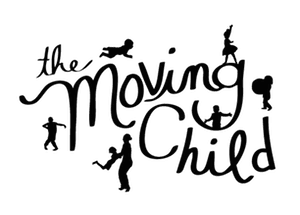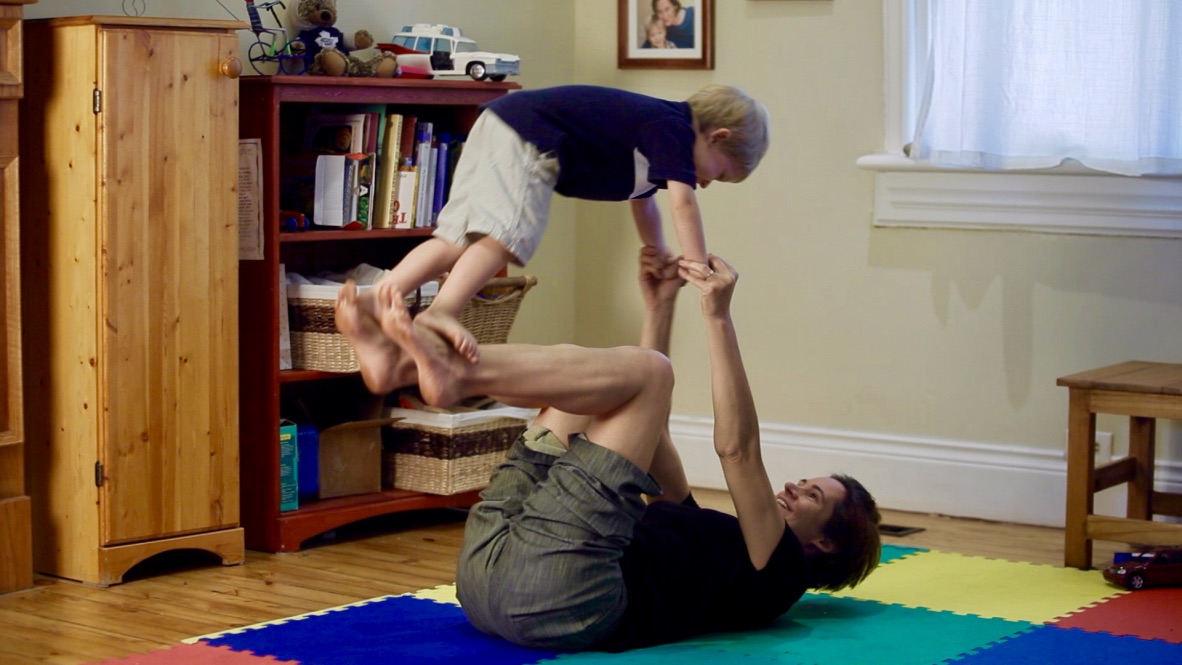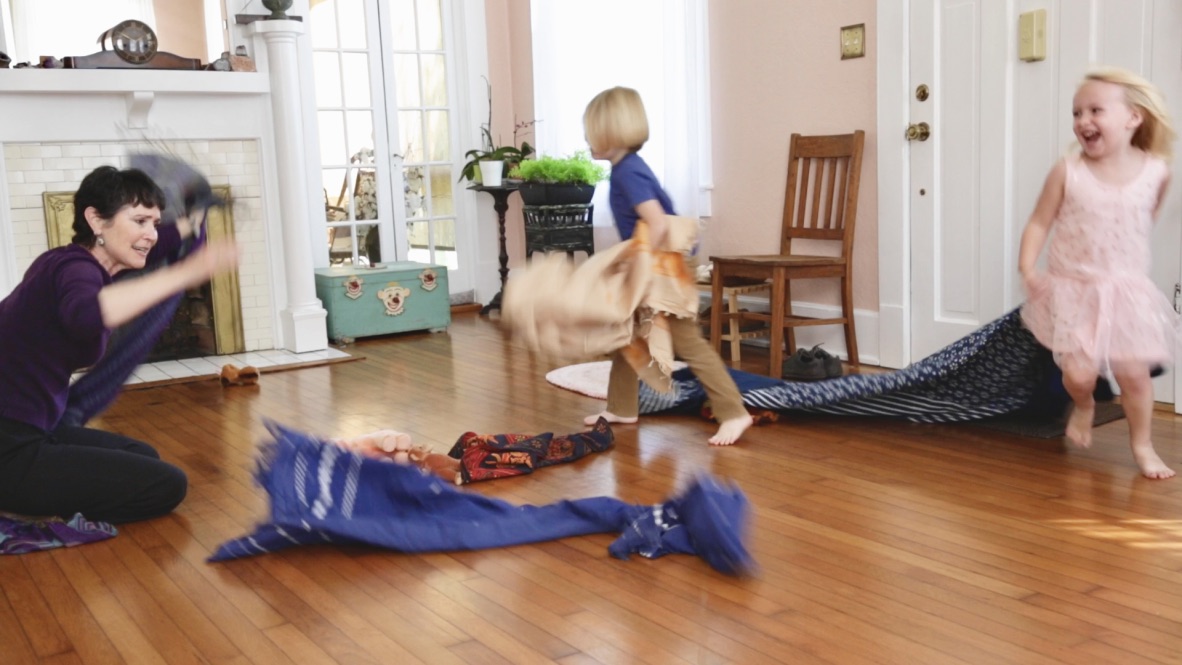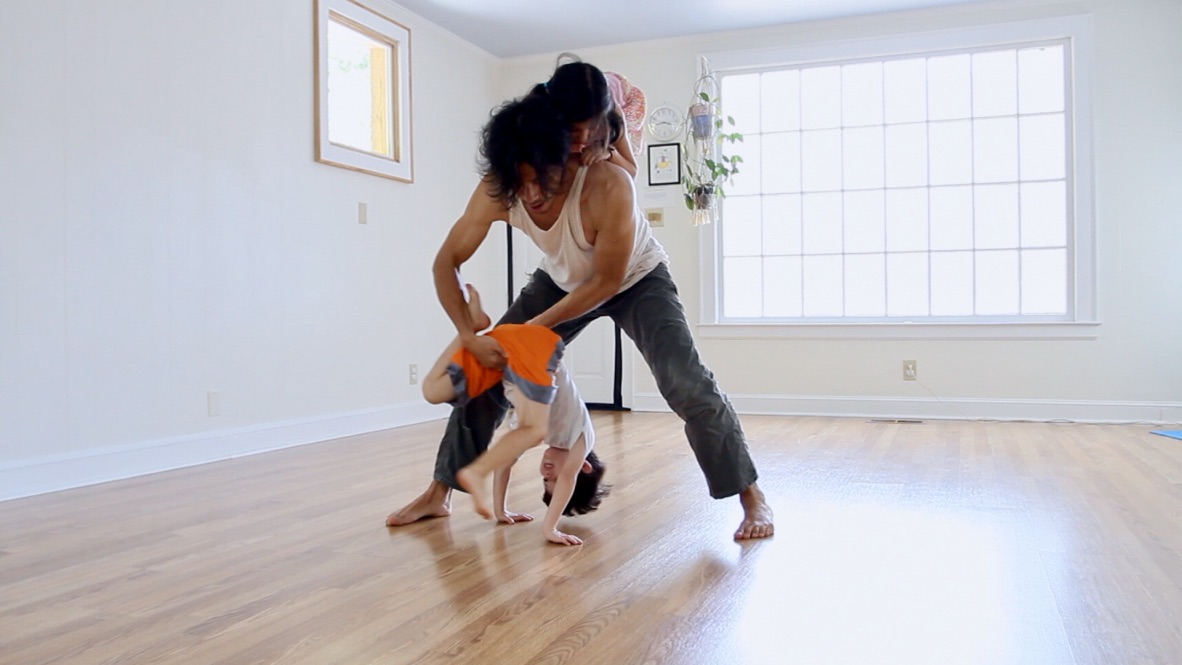February is National Psychology Month! We share an excerpt below from The Moving Child Films upcoming EBook, written by creator/director Hana Kamea Kemble. In this chapter, Hana speaks about the relationship between movement and psychological development.
Without the support of our breath and body’s capacity to move and shape change, it is difficult to know how to welcome, name, sequence, express, digest and understand our emotions.
From origins in early gesturing and sound making to whole body nonverbal communication, we are ‘speaking’ our feelings from birth, later, adding words to express our feelings. Throughout this process children are in a deep emotional regulation learning cycle. The body is core to experiencing the energetics, waves, sensations, contours, colours, muscular tension-flow changes, and chemical rushes that are our feelings.
Our feelings are expressed through movements that wind along the pathways of our body from up and down, inner to outer, through the centre to the periphery, engaging the endpoints of the nervous system and skeleton (all the way out the hands, feet, face/head, and pelvic floor) – and so on and so on, in a complex inner to outer dance. There is a naturalness to this flow of vital energy as expressed in healthy emotional expression, and children with mental health challenges and symptoms often experience relief when feelings that have not been safe to feel or express can be welcomed through forms of symbolic expression such as dance.
Whatever relationship a parent has to a feeling can also impact their child’s healthy embodiment of that same feeling. In Somatic Psychology we utilize a term called “Energetic Limits”, that are laid down somatically in family members’ bodies, to understand how a child is developing in their relationship to their embodied feelings. Most families will have set limits on how much of a particular feeling can be expressed and in what way it can be expressed: such as joy, sadness, frustration or anger, etc. And this can be brought into consciousness for families to recognize their relationship to feelings and then look at alternative ways of expressing feelings, without having to be afraid of them.
How can we attune to, mirror, move dynamically with our children in order to support their intertwining emotional and embodied development? What if families could engage in a healthy ‘dance your feelings’ fun play and get to share facial expressions and movement actions with each other in a happy, sad, angry, worried and/or joyful dance? How about we also throw in being different animals while doing this dance? Allowing the Shaping of the animal’s body and way of moving to be a ‘container’ for the feelings, with the Shaping supporting neurological regulation? Children’s visual and aural mirror neurons (in the brain) are picking up the nonverbal communication of their caregivers, learning how to allow or not allow feelings to move through the body based on that unconscious patterning. Children are then also learning that emotions can be expressed in a healthy or unhealthy way. By unhealthy I am meaning in ways that hurt other people or make them feel scared. Even caregivers just pausing for a deep breath in when having larger feelings surface, can teach young ones how to self-regulate their emotions by remembering to breathe more fully, and to pause, which is a learned skill.
One tool for working with children who are feeling angry or frustrated (or not even able to acknowledge the feelings) is to allow them to push into your hands starting gently then bringing more (safe) pressure as you give and take each other’s weight. Or using another object like a physiotherapy ball between you and the child, you can engage the child in finding a slower breath, as they push down into the earth through their feet. Being met with your eye contact that says, “yes, your anger is welcome here and I am here to support your experience of feeling that anger move through your body!” While keeping things playful.
This type of body to body engagement, sometimes referred to as “creative opposition”, often immediately has an effect not only on a child’s felt sense of bonding with you, but also with their felt ability to regulate their feeling state. The child learns that they can safely express this anger through their body in a grounding way when reminded of the pathways and movements available to them, and done in a relationally supported way, which makes all the difference with those bigger feelings at an early age where co-regulation is the acknowledged tool preceding the later developing self-regulation skills. It is important to note however that during this push activation game, the child be supported to remain in control and not feel overwhelmed by an adult but rather be supported in a moving, changing, shifting, collaboration. Taking the push from the hands into the feet, or back to back, hip to hip etc., will also feel satisfying for most children when done in ways where they can feel agency in that way of moving. Each of those pushes will activate different reflexes and the brain’s learning that there is more than one way to express anger. It is always good to build in pauses and allow the child or adult to say, “stop” when needed too.
Another feelings self-regulation tool is animal imagery. Pretending to be a wolf is a powerful tool for helping children to express the feeling of sadness or grief. I once had a deaf teenage dance therapy client who after drawing many wolves then wanted to learn how to sound like a wolf. She asked (through an interpreter) if I could let her know when the sounds she was making were closest to a wolf sound. I would direct her back into sensing her own body and its vibrations for what felt right and good and satisfying in terms of being able to express her feelings through her voice. She wholeheartedly engaged with sensing the vibration and the pathway “out” of her body of her wolf sounds as a way to express sadness.
As Dance/Movement Therapist and Movement Profile Analyst Janet Kaylo speaks about during The Moving Child Film I, children learn best how to sit still and be quiet by moving, and even throwing things around the room”. What does she mean by this curious statement? (Janet’s full interview is available in the Resources section of The Moving Child website). We mean that children need to experience the full continuum of expression in their relationship to Flow, Weight, Space and Time in order to know a natural recuperation into stillness. So throwing blankets freely around a room for a little while will activate a child’s relationship to all of these effort factors of movement potentially (freeing their flow for example and increasing their pressure). The child will then know through their embodied experience of how to find or create or move their body into greater stillness, recuperating after the full exertion. Now not all children can do that on their own or at a young age, so they need the embodied, playful presence of adults to teach them how, by modulating, as you see Janet do in The Moving Child II, the children’s energy from high to low, using movement directives and openings or explorations, playfully inviting children to find another way to calm using their body as their best tool, one that is always available if they can stay connected to it.
If there is no connection to the body, no breath support, no shape change explored, no effort modulation, no acknowledging of sensations then the energetic charge of feelings will flood the body-brain and a child will be overwhelmed and/or go into freeze response and “clam up”, or vice versa “explode”.
I dream of the words “Movement Play” becoming an every day word for parents and caregivers of children, acknowledged as just as important as napping, or feeding or sleeping, for children to be healthy and reach their full potential. Movement playtime includes the adult paying attention and truly “seeing” the child, body to body, reflecting their nonverbal communication and movement and teaching how to be in good embodied welcoming relationship with emotions. I dream of families where time is made each day for age appropriate movement games, the types of games that are explored in all chapters of the upcoming Ebook of The Moving Child.
Pre-order Your Copy of The Moving Child Ebook Here
Did you find this article interesting?
Please support The Moving Child by sharing it on social media or forward it to your community.
Learn more about The Moving Child Films here or Buy Your Copy Now.
Rent, Stream or Buy The Moving Child Films Now




